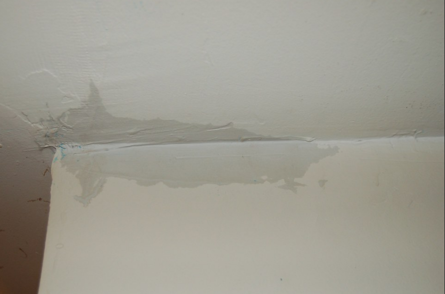Do's & Don'ts of Water Damage.
Do's & Don'ts of Water Damage.
Blog Article
Every person may have his or her own theory in relation to 5 Home Safety Tips To Reduce The Risk Of Fire And Water Damage.

Water offers life, water intrusion on components where it's not expected to be can result in damages. It can peel away surfaces and also erode the structure if the water saturates right into your structure. Mold as well as mold additionally thrive in a moist setting, which can be unsafe for your health and wellness. Homes with water damage smell old as well as musty.
Water can come from several resources such as tropical cyclones, floodings, ruptured pipes, leakages, and drain problems. In case you experience water damage, it would certainly be good to know some safety precautions. Right here are a couple of guidelines on exactly how to take care of water damages.
Do Prioritize Home Insurance Coverage Insurance Coverage
Water damage from flooding as a result of heavy winds is seasonal. However, you can likewise experience an abrupt flood when a malfunctioning pipe suddenly bursts right into your home. It would certainly be best to have house insurance coverage that covers both acts of God such as all-natural disasters, and emergencies like busted plumbing.
Don't Forget to Switch Off Utilities
In the event of a disaster, specifically if you reside in a flood-prone area, it would certainly be recommended to switch off the major electric circuit. This cuts off power to your entire residence, protecting against electrical shocks when water comes in as it is a conductor. Don't fail to remember to turn off the primary water line valve. Furnishings will relocate around as well as cause damage when floodwaters are high. Having the major valve shut down avoids more damage.
Do Remain Proactive and also Heed Climate Alerts
Pay attention to evacuation warnings if you live near a river, creek, or lake . Doing so lowers possible property damage.
Don't Neglect the Roofing System
Before the weather turns frightful, ensure you have a roof covering inspection. It would be prudent to receive this solution each year as it can minimize intricate concerns. You can avoid rain damages if there are no openings as well as leaks in your roofing system. Your roofing professional will also take care of faulty seamless gutters or any other indications of weakening. This will prevent water from moving down your wall surfaces as well as saturating your ceiling.
Do Focus On Little Leaks
A burst pipeline does not happen over night. Typically, there are red flags that suggest you have damaged pipes in your home. You might discover gurgling paint, peeling wallpaper, water streaks, water stains, or dripping audios behind the walls. Eventually, this pipe will burst. Preferably, you need to not wait on points to intensify. Have your plumbing fixed before it results in huge damages.
Don't Panic in Case of a Ruptured Pipeline
Maintaining your presence of mind is important in a time of situation. Worrying will just compound the issue because it will certainly stifle you from acting quick. Timing is crucial when it comes to water damages. The longer you wait, the more damages you can expect. Hence, if a pipe bursts in your home, instantly turned off your primary water shutoff to cut off the source. Unplug all electrical outlets in the area or transform off the circuit breaker for that part of the home. Ultimately, call a trusted water damage restoration professional for support.
Water provides life, water breach on components where it's not supposed to be can result in damages. Houses with water damage smell old as well as stuffy.
Water damage from flood dues to heavy winds is seasonal. You may see gurgling paint, peeling wallpaper, water streaks, water spots, or trickling sounds behind the wall surfaces. When it comes to water damage, timing is vital.
Some Do's & Don't When Dealing with a Water Damage
DO:
Make sure the water source has been eliminated. Contact a plumber if needed. Turn off circuit breakers supplying electricity to wet areas and unplug any electronics that are on wet carpet or surfaces Remove small furniture items Remove as much excess water as possible by mopping or blotting; Use WHITE towels to blot wet carpeting Wipe water from wooden furniture after removing anything on it Remove and prop up wet upholstery cushions for even drying (check for any bleeding) Pin up curtains or furniture skirts if needed Place aluminum foil, saucers or wood blocks between furniture legs and wet carpet Turn on air conditioning for maximum drying in winter and open windows in the summer Open any drawers and cabinets affected for complete drying but do not force them open Remove any valuable art objects or paintings to a safe, dry place Open any suitcases or luggage that may have been affected to dry, preferably in sunlight Hang any fur or leather goods to dry at room temperature Punch small holes in sagging ceilings to relieve trapped water (don't forget to place pans beneath!); however, if the ceiling is sagging extremely low, stay out of the room and we'll take care of it DO NOT:
Leave wet fabrics in place; dry them as soon as possible Leave books, magazines or any other colored items on wet carpets or floor Use your household vacuum to remove water Use TV's or other electronics/appliances while standing on wet carpets or floors; especially not on wet concrete floors Turn on ceiling fixtures if the ceiling is wet Turn your heat up, unless instructed otherwise

I found that post about Safety Tips To Prevent Fire And Water Damage while doing a search on the search engines. Sharing is nice. Who knows, you may just be doing someone a favor. Thanks so much for taking the time to read it.
Report this page